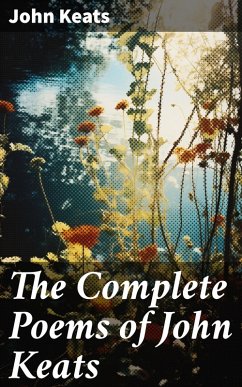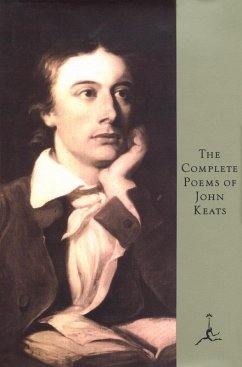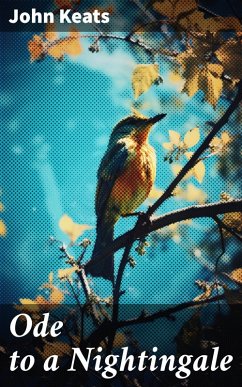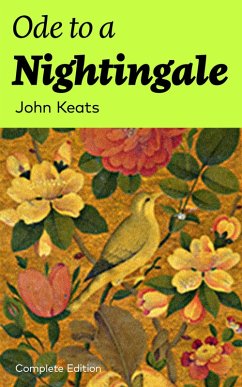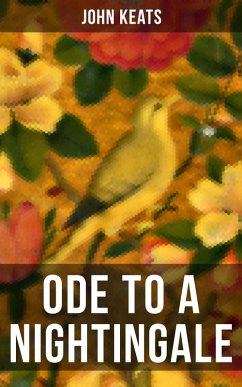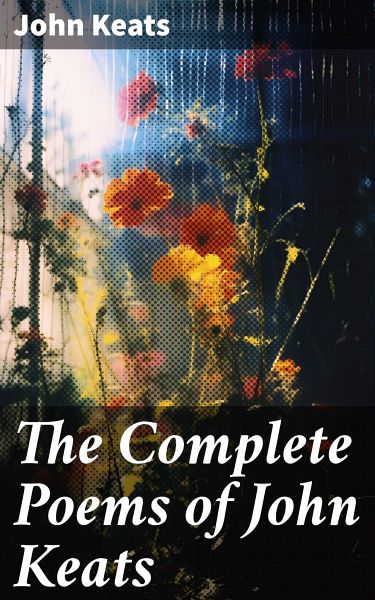
The Complete Poems of John Keats (eBook, ePUB)
Enriched edition. Exploring Nature, Beauty, and Life in Keats' Poetic Realm
Kommentar: Ellington, Trevor / Redaktion: Good Press
Versandkostenfrei!
Sofort per Download lieferbar
1,99 €
inkl. MwSt.
Weitere Ausgaben:

PAYBACK Punkte
0 °P sammeln!
John Keats's "The Complete Poems of John Keats" is a profound collection that showcases the poet's mastery in evoking beauty, nature, and the human experience through rich imagery and emotive language. Embracing the Romantic literary style, Keats employs sensuous detail and lyrical beauty, often exploring themes of transience, love, and mortality. This compilation includes iconic works such as "Ode to a Nightingale" and "Ode on a Grecian Urn," which reflect his philosophical musings and emotional depth, emerging from a context of turmoil and personal tragedy, including the loss of loved ones a...
John Keats's "The Complete Poems of John Keats" is a profound collection that showcases the poet's mastery in evoking beauty, nature, and the human experience through rich imagery and emotive language. Embracing the Romantic literary style, Keats employs sensuous detail and lyrical beauty, often exploring themes of transience, love, and mortality. This compilation includes iconic works such as "Ode to a Nightingale" and "Ode on a Grecian Urn," which reflect his philosophical musings and emotional depth, emerging from a context of turmoil and personal tragedy, including the loss of loved ones and his own health struggles. John Keats (1795-1821) was a pivotal figure in the Romantic movement, profoundly influenced by the artistic revolutions of his time. His brief but intense literary career was shaped by an acute awareness of beauty and suffering, which deeply permeates his poetry. Keats's engagement with classical themes and his passionate exploration of the senses speak to his desire to capture the ephemeral moments of existence, heightened by his own transient life. This collection is a must-read for anyone seeking to delve into the emotional landscapes of human experience. Readers will find Keats's uniquely intimate connection with nature and profound existential inquiry both timeless and resonant, inviting deep reflection and appreciation for the delicate balance of beauty and sorrow in life. In this enriched edition, we have carefully created added value for your reading experience: - A comprehensive Introduction outlines these selected works' unifying features, themes, or stylistic evolutions. - The Author Biography highlights personal milestones and literary influences that shape the entire body of writing. - A Historical Context section situates the works in their broader era-social currents, cultural trends, and key events that underpin their creation. - A concise Synopsis (Selection) offers an accessible overview of the included texts, helping readers navigate plotlines and main ideas without revealing critical twists. - A unified Analysis examines recurring motifs and stylistic hallmarks across the collection, tying the stories together while spotlighting the different work's strengths. - Reflection questions inspire deeper contemplation of the author's overarching message, inviting readers to draw connections among different texts and relate them to modern contexts. - Lastly, our hand-picked Memorable Quotes distill pivotal lines and turning points, serving as touchstones for the collection's central themes.
Dieser Download kann aus rechtlichen Gründen nur mit Rechnungsadresse in A, B, BG, CY, CZ, D, DK, EW, E, FIN, F, GR, H, IRL, I, LT, L, LR, M, NL, PL, P, R, S, SLO, SK ausgeliefert werden.




